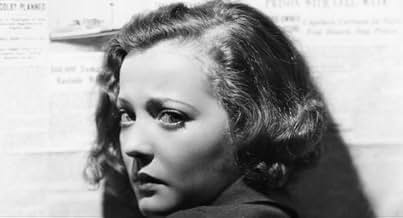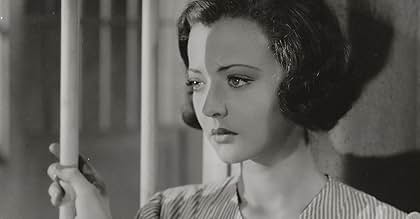A young woman who owns a coffee shop falls for a handsome young customer, unaware that he is a gangster. The association results in her being tried and sentenced to a long prison term. Howev... Read allA young woman who owns a coffee shop falls for a handsome young customer, unaware that he is a gangster. The association results in her being tried and sentenced to a long prison term. However, the authorities permit her to escape, hoping that she will lead them to her boyfriend.A young woman who owns a coffee shop falls for a handsome young customer, unaware that he is a gangster. The association results in her being tried and sentenced to a long prison term. However, the authorities permit her to escape, hoping that she will lead them to her boyfriend.
- Director
- Writers
- Stars
- Awards
- 1 win total
- Nurse Agnes
- (as Rita Stamwood Warner)
- Nurse Jennie
- (as Grace Hale)
- Jeremiah
- (as Daniel Haynes)
- Director
- Writers
- All cast & crew
- Production, box office & more at IMDbPro
Featured reviews
Mary Burns (Sylvia Sidney), owner of a roadside coffee cup shop next door to a garage/gas station in the country, awaits the arrival of Babe Wilson (Alan Baxter), an oil salesman whom she sees every three or four weeks. Upon his arrival, Babe, a man Mary knows little about, proposes marriage to her and wants her to immediately leave everything behind and accompany him to Canada. Minutes later, police arrive to arrest Babe, exposed as a wanted gangster and cold-blooded killer. Shooting his partner, Joe (Norman Willis), so not to reveal the location of the stolen bonds, Babe makes his daring escape, leaving Mary to face arrest. During her trial by jury, Mary is cross-examined by an attorney, revealing she knew nothing about Babe Wilson except that she loved him. Because of poor sufficient evidence, Mary is found guilty and sentenced to serve 15 years in the penitentiary. Unable to get parole for disclosing Wilson's whereabouts to Harper (Wallace Ford) from the parole board, Mary, not wanting to spend any more time behind bars, talks Goldie Gordon (Pert Kelton), her cellmate, into joining her in a well-planned prison break. Now living in a tenement apartment somewhere in the city with Goldie, and flat broke, Mary, alias Alice Brown, takes a chance in obtaining a night job as dishwasher at the Mercy Hospital. While there, Mary meets patient, Barton Powell (Melvyn Douglas), an noted explorer with bandaged eyes due to snow blindness he got in Tibet. He not only likes the sound of her voice, but her coffee as well. When Spike (Brian Donlevy), locates Mary with intentions of taking her back to Babe, Mary escapes to Kansas, only to be pursued by Harper, hoping she will lead him to Babe before any further hold-ups and killings occur. Others in the cast include: Esther Dale (Kate); Daniel L. Haynes (Jeremiah, Powell's butler); Cora Sue Collins (Dorothy); and George Chandler, among others.
An exciting story that keeps viewers interest for its entire 84 minutes. Alan Baxter, in his motion picture debut, gives a promising start to his movie career playing a hooded gangster. Unlike movie tough guys as James Cagney, Edward G. Robinson, George Raft and later Humphrey Bogart who all achieved popularity through their wide-range of performances, Baxter never became a top-rated actor in the Alan Ladd mode. Though he did a distinctive way of talking as well as some leading roles, mostly in second-rate features, Baxter appeared mainly in either supporting or minor parts throughout his movie or TV career. Baxter worked again opposite Sylvia Sidney in THE TRAIL OF THE LONESOME PINE (1936), but had little to do, especially when the major male co-stars were Henry Fonda and Fred MacMurray. Melvyn Douglas, who appears 39 minutes into the start of the story, gives a fine performance as a bickering hospital patient who softens himself to his new assistant, Mary, unaware of her troubled past. Pert Kelton, better known as a sassy blonde in comedies, is surprisingly cast as a tough prison inmate, and does it so well. A pity she didn't get enough stronger roles like this to display her acting ability than just a secondary comedienne. Like many movies of the type, MARY BURNS, FUGITIVE doesn't disappoint. The car radio playing to the tune, "I'm in the Mood for Love" introduced from EVERY NIGHT AT EIGHT (1935), is vocalized by Frances Langford.
Though MARY BURNS, FUGITIVE did have enough commercial television exposure through much of the 1960s and 70s, like Sylvia Sidney's other Paramount film releases of the 1930s, this film remains overlooked and forgotten. Never distributed on video cassette, MARY BURNS, FUGITIVE got its long overdue broadcast on cable television's Turner Classic Movies (TCM premiere: August 5, 2019). (***)
'Mary Burns, Fugitive' turned out to be a solid film with a lot of notable things in a good way. Sidney certainly being one of them, not surprising as she was one of the best things of pretty much every film she starred in, and was pleasantly surprised by Donlevy. 'Mary Burns, Fugitive' is not a perfect film and its full potential is not followed all the way through. It could have done with more grit and there is one performance that was rather weak for my tastes.
That weak performance coming from a very bland Alan Baxter, who is neither sympathetic or formidable (didn't really detect much of anything really) and has little chemistry with Sidney. Which should have smoldered but instead doesn't even achieve lukewarm level.
As said, 'Mary Burns, Fugitive' could have done with a little more grit and thrills, not going for the full punch enough and not quite giving enough freshness to familiar elements. It starts a touch slow as well, before picking up quite quickly.
Sidney however is her usual expressive and easy to root for self and Douglas shows that he can do cantankerous just as well as he can do suave and fatherly, although his role is smaller than his billing indicates. Most surprising is the quietly menacing Donlevy. The rest of the cast also fare well, namely Pert Kelton, excelling in a role that one might think on paper wouldn't fit her. William K. Howard keeps the intrigue up and does generate some suspense.
It's stylishly and atmospherically shot, not looking too studio-bound or cheap. The script doesn't blow the mind, but it has energy at least, it's cohesive and the dialogue flows. The story likewise, complete with some neat twists and it entertained and intrigued me enough.
On the whole, solid but not spectacular. 7/10
She learns the hard way that he's one of the FBI's public enemies when she gets brought in on a holdup and Baxter escapes and she's caught. After trial and conviction she's sent to women's prison for 15 years.
In this film everybody manipulates Sylvia, her cellmate brassy Pert Kelton, G-man Wallace Ford, and the rest of law enforcement as an 'escape' is arranged hoping she'll lead the cops to Baxter. But she really doesn't know anything and can't convince anyone of that fact.
There are some real good performances here from Sidney and from Baxter as one cold villain with one weakness, the hots for Sylvia. Just as cold and villainous but without the libido problems is Brian Donlevy in one of his earliest roles. He meets quite an end.
With the part of the arranged escape that doesn't go quite as planned some elements of White Heat are here.
This one is a crackerjack sleeper from Paramount.
Did you know
- TriviaOne of over 700 Paramount productions, filmed between 1929 and 1949, which were sold to MCA/Universal in 1958 for television distribution, and have been owned and controlled by Universal ever since; its earliest documented telecast took place in Boston Tuesday 30 September 1958 on WBZ (Channel 4); it first aired in Omaha Sunday 13 September 1959 on KETV (Channel 7).
- GoofsDialog indicates that Mary's fifteen year sentence would end in 1950, so she was sentenced in 1935. However, the month-date-day calendar in the court as she is sentenced says it is a Thursday when in 1935 it should have been a Monday.
- Quotes
Barton Powell: [to Mary] Well, talk! Say something! You don't know what a relief it is to hear a woman that doesn't sound like morning in the barnyard.
Details
- Release date
- Country of origin
- Language
- Also known as
- Mary Burns, Fugitive
- Filming locations
- Hollywood Center Studios - 1040 N. Las Palmas Avenue, Hollywood, Los Angeles, California, USA(studio - then General Service Studio)
- Production companies
- See more company credits at IMDbPro
Box office
- Budget
- $337,152 (estimated)
- Runtime
- 1h 24m(84 min)
- Color
- Aspect ratio
- 1.37 : 1






























